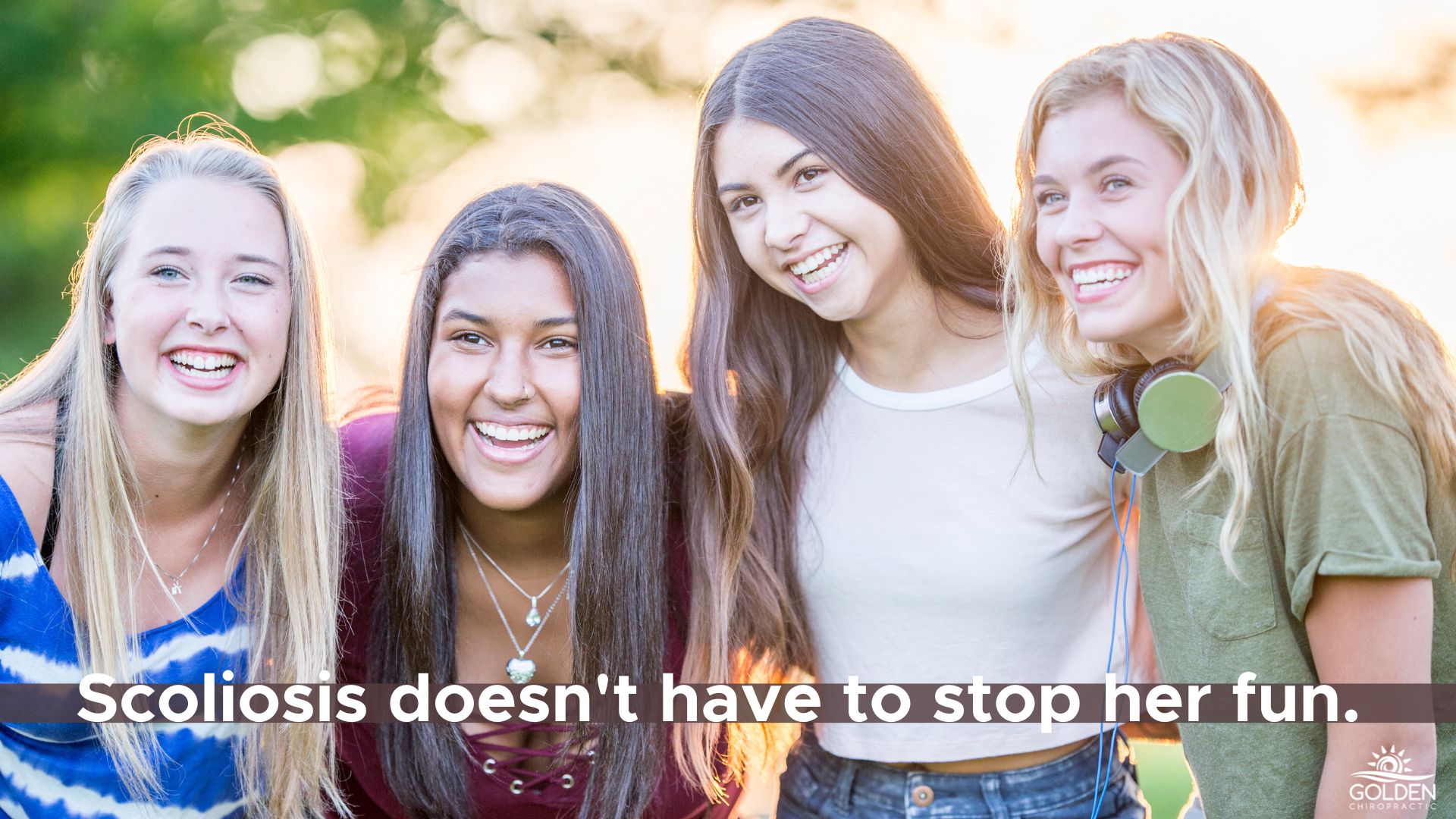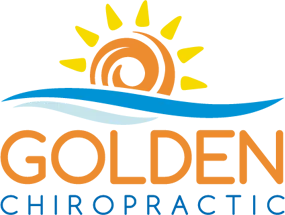
02/14/2023 by Dr. Michaela Peterson
Scoliosis & Chiropractic: Less Pain, More Life
Scoliosis can feel devastating for a teenager.
During those turbulent teen years, the disfigurement from scoliosis can feel extremely embarrassing. Wearing a bathing suit and other more revealing clothes can feel especially mortifying. Add to that the difficulty of finding properly fitting clothes, and you’ve got a very frustrated teen on your hands.
Scoliosis can also make a teen feel scared about getting care, as their ribs can feel sensitive and their spinal muscles can spasm.
The constant discomfort and lack of quality sleep resulting from scoliosis can affect not only a teen's school performance, but can also have a negative impact on their overall mood and well-being.
Teenage scoliosis just makes life harder.
What is scoliosis?
Scoliosis is a medical condition that affects the spine, causing it to curve abnormally. While it can occur at any age, juvenile idiopathic scoliosis is a common type that affects children and teenagers.
What does scoliosis look like?
The spine is made up of 33 vertebrae that run from the neck to the lower back. When viewed from the front, a healthy spine appears straight. However, in scoliosis, the spine curves abnormally.
When you have scoliosis, your spine has curves that look like a C-shape or S-shape. The spine appears to bend to the side and create an abnormal curve in your thoracic or lumbar vertebrae.
What is juvenile idiopathic scoliosis?
Juvenile idiopathic scoliosis (also known as adolescent idiopathic scoliosis) is a type of scoliosis that affects children and teenagers between the ages of 3 and 18. It is called “idiopathic” because the cause is unknown. This type of scoliosis typically affects girls more often than boys.
What are the symptoms of juvenile idiopathic scoliosis?
Symptoms can be mild or severe. You (or your teen) may not even notice them at first. The common scoliosis symptoms include:
- Uneven shoulders
- Uneven waist
- A prominent hip or shoulder blade
- Back pain
- Fatigue
- Postural changes
What causes juvenile idiopathic scoliosis?
The exact cause is unknown, but researchers believe that it may be due to a combination of genetic and environmental factors. Some theories suggest that hormonal changes during puberty may also play a role.
Can chiropractors diagnose juvenile idiopathic scoliosis?
If you suspect your child has scoliosis, we can conduct an initial exam to look for the signs. We’ll look for uneven shoulders, waist, and hips, as well as a prominent hip or shoulder blade.
We’ll likely refer you and your teen for X-rays.
If we determine that your teen has signs of scoliosis, we’d like to see X-rays to determine the degree and location of their spinal curve. The measure of the degree of curvature is referred to as the “Cobb angle.” The Cobb angle is used to classify the severity of the scoliosis and determine the best course of treatment.
What are the treatments for juvenile idiopathic scoliosis?
The treatment options for juvenile idiopathic scoliosis depend on the severity of the condition. In mild cases, observation and monitoring may be all that is needed. In more severe cases, a brace may be recommended to help control the progression of the curve.
Surgery may be recommended for the most severe cases. The type of surgery will depend on the degree and location of the curve.
How does chiropractic care help with juvenile idiopathic scoliosis?
Our goal as chiropractors is to help improve the alignment and balance of the spine, which may help reduce the progression of your teen’s scoliosis.
We had one teen patient diagnosed with mild scoliosis at the age of 11. She came to see us for back pain at age 13. We used the Adam's Scoliosis Screening test and noticed that her spinal curvature was larger than shown in her previous X-ray.
We recommended a follow-up X-ray. It revealed that her scoliosis had severely progressed over the course of 2 years. We referred her to a pediatric spinal orthopedist at Stanford who monitored her progress with X-rays every 6 months.
We have continued to adjust her and are pleased to report that her most recent X-rays showed no signs of further progression.
Chiropractic care can help ease the pain of scoliosis.
By aligning the spine and relaxing the muscles around it, chiropractic helps reduce your teen’s discomfort and soreness. Our own Dr. Michaela manages her scoliosis with weekly chiropractic adjustments and massage to keep her comfortable and ready to treat patients.
Our chiropractors use a variety of techniques for scoliosis, including spinal adjustments, manual therapy, and exercises to help improve the function of your teen’s spine.
We may also recommend massage or physical therapy.
Need a chiropractor for teen scoliosis in the Santa Cruz area?
Over the years, we’ve helped our patients—and a few staff members—get relief from the symptoms of scoliosis.
If you suspect that your child or teen has scoliosis, have them evaluated by our chiropractors here in Aptos. You can make your appointment online.
Is your teen experiencing back or neck pain that may have a cause other than scoliosis?
We’ve written a blog post covering the teenage conditions we often see in our office. Learn more about teen neck and back pain here.
